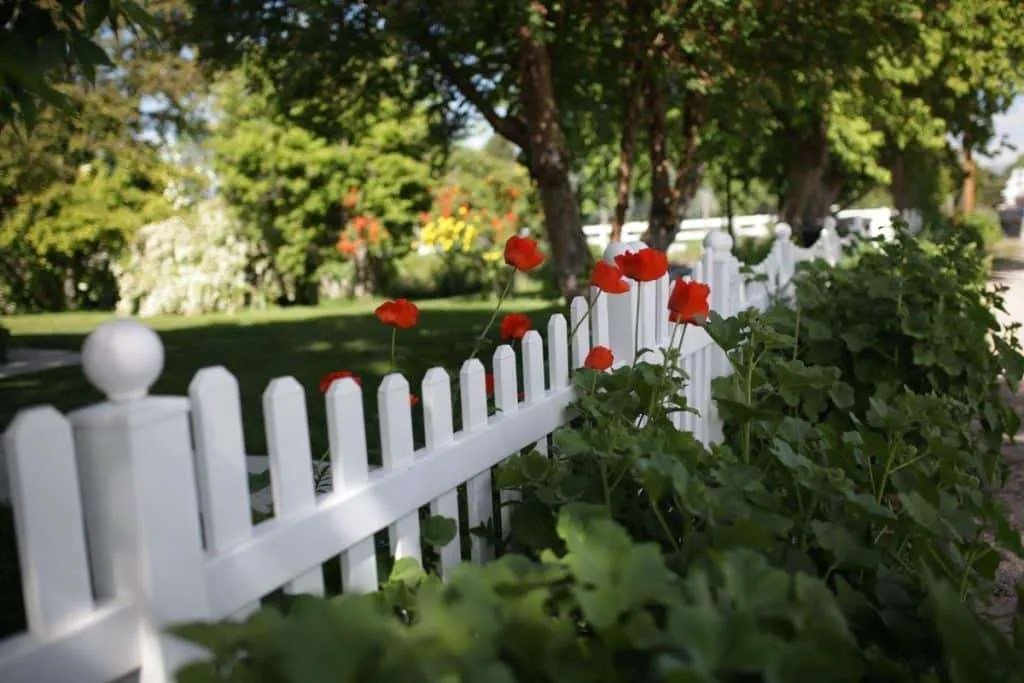

How To Grow Plants Along A Vinyl Fence: Boosting Your Landscape
.webp?alt=media&token=d52f06a3-84e7-41d1-8ce9-41d48bf47aea)
Good design and planning are the most critical steps in selecting the right plants by size, type, and the ideal combination between your fence and garden. Vinyl fences offer durability and low maintenance but often appear stark and impersonal. Transforming this blank canvas into a vibrant green wall is achievable and rewarding.
Planning Your Vinyl Fence Garden
Before you start planting, it´s essential to plan your garden. Consider the following factors:
- Sunlight: Determine how much sunlight your fence receives to decide the type of plants you can grow.
- Soil Conditions: The soil along your fence might differ from the rest of your yard. Check its composition and drainage.
- Fence Height: It will influence the types of plants you can choose.
- Maintenance: Consider how much time you will dedicate to plan care.
Choosing the Right Plants

The key to a successful vinyl fence garden is selecting plants suitable for your specific conditions. Here are some popular options:
Climbing Plants
- Vines: these are excellent for covering tall fences.
Clematis: Offers a variety of colors and bloom times.
Honeysuckle: Fragrant flowers attract birds.
Trumpet Vine: Bold, trumpet-shaped flowers.
Morning Glory: Quick-growing and comes in various colors.
- Rose: Climbing roses can add elegance and fragrance to your fence.
- Jasmine: It can be a beautiful addition because of its sweet scent.
Shrubs and Bushes
- Boxwood: Provides a formal look and can be shaped into hedges.
- Hydrangea: Offers large, colorful blooms.
- Spirea: Known for its delicate flowers and easy care.
- Butterfly Bush: Attracts butterflies and other pollinators.
Groundcovers
- Vinca Minor: Provides dense ground cover with attractive flowers.
- Creeping Phlox: Low-growing with colorful blooms.
- Lantana: Offers colorful flowers and attracts butterflies.
6 Planting Techniques
1. Prepare the Soil
Loosen the soil along the fence line to boost drainage and aeration. Add fertilizer or organic matter to improve the soil.
2. Plan selection
Select proper plants for your climate and soil ambiance. Consider the adult size of the plants to ensure they won´t overwhelm the fence.
3. Spacing
Plant according to the precise requirements of each plant. Allow enough space for growth.
4. Support
For climbing plants, provide support structures like trellis or wire fencing.
5. Watering
Regularly water your plants, especially during dry periods.
6. Fertilizing
Follow the fertilizer recommendations for your chosen plants.
Care and Maintenance
- Regular Pruning: prune climbing plants to maintain shape and encourage growth.
- Deadheading: Pull out spent flowers to promote continuous blooming.
- Weeding: Keep the area around your plants weed-free.
- Pest and Disease Control: Monitor for pests and diseases and act appropriately.
- Winter Protection: Protect tender plants from frost or harsh winter conditions.
4 Creative Ideas for Your Vinyl Fence Garden
%20(1).webp?alt=media&token=5da0253e-f8cf-43b5-a723-e22f2e4437cc)
1. Vertical Gardens
Create a lush green wall by planting various climbing plants and cascading foliage.
2. Color Combinations
Experiment with different plant colors and textures to create visually appealing combinations.
3. Privacy Screens
Use tall shrubs or vines to create a natural privacy screen.
4. Container Gardening
Add pots with flowering plants or herbs along the base of your fence.
Additional Tips
- Combine Different Plants: Creative visual interest by mixing and matching various plants with different textures, colors, and bloom times.
- Consider Edible Options: Incorporate herbs or edible flowers for a functional and beautiful garden.
- Provide Support: For climbing plants, ensure they have adequate support to prevent damage to the fence.
- Protect from Winter: Protect delicate plants from frost or harsh winter conditions in colder climates.
Conclusion
By following these guidelines and incorporating your creativity, you can transform your vinyl fence into a stunning focal point for your yard.
Enjoy the task of watching your plants grow and flourish! Call Our Fence Experts.

Get In Touch
Cumming, GA
404-246-1268
espanafence@gmail.com
Monday - Friday8:00 AM - 4:00 PM
Our Services
Gallery





